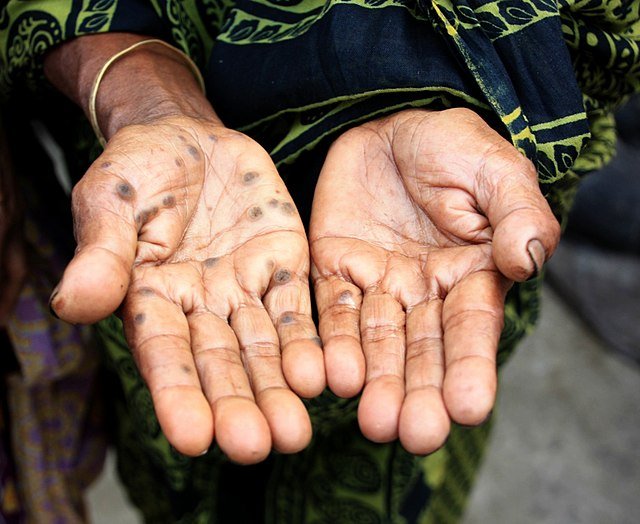How to Buddy Tape a Finger

How to Properly Buddy Tape a Finger for Quick Recovery
Read Time: 6 mins
Buddy taping is a simple yet effective first-aid technique to stabilize a mildly injured finger by securing it to a neighboring healthy finger. Ideal for minor sprains or strains, this method provides support while allowing limited mobility. However, it’s not a one-size-fits-all solution—severe injuries like fractures or dislocations require professional care. This guide walks you through when and how to buddy tape a finger, using clear steps and precautions to ensure safe healing.
What Is Buddy Taping?
Buddy taping involves taping an injured finger to an adjacent uninjured one to limit movement and promote healing. It’s commonly used for minor injuries, such as a sprained finger from a sports mishap, but it’s not suitable for open wounds, visible deformities, or complex fractures. Proper technique is key to avoiding complications like skin irritation or restricted blood flow.
When to Use (and Avoid) Buddy Taping
Before taping, assess the injury carefully to ensure buddy taping is appropriate.
When It’s Safe to Buddy Tape
- Minor Sprains or Strains: Mild pain or swelling without deformity.
- Stable Minor Fractures: Only under medical guidance, after an X-ray confirms the fracture will heal without surgery.
- Temporary Support: To immobilize a finger until you can see a doctor for a suspected minor injury.
When to Avoid Buddy Taping
- Open Wounds: Taping can trap moisture and increase infection risk.
- Visible Deformities: Bent, protruding, or misaligned fingers (e.g., mallet finger or dislocations) need immediate medical attention.
- Severe Swelling or Pain: These may indicate a fracture or serious injury requiring a splint or surgery.
- Numbness or Tingling: Suggests nerve or circulation issues—see a doctor promptly.
If you’re unsure about the injury’s severity, consult a healthcare provider before attempting to tape.
Step-by-Step Guide to Buddy Taping a Finger
Follow these steps to buddy tape effectively, ensuring comfort and stability while minimizing risks.
1. Assess the Injured Finger
Examine the finger for signs of serious damage:
- Check for abnormal bending, protrusions, or extreme swelling.
- Ensure there are no open cuts or sores.
- If the finger looks deformed or you suspect a fracture, seek medical care immediately.
2. Choose the Right Tape
Use medical-grade cloth tape, which is durable, waterproof, and easy to tear into custom widths. Avoid regular adhesive tape, as it’s less flexible and may irritate skin.
- Tip: Cut or tear the tape into strips about ½ inch wide for smaller joints or 1 inch wide for areas closer to the knuckle.
- Where to Find: Available at pharmacies or online.
3. Select the Buddy Finger
Pair the injured finger with a healthy adjacent finger of similar length. For example:
- Middle or Index Finger: Tape to the finger next to it for balanced support.
- Ring Finger: Tape to the pinkie, as taping to the middle finger may limit grip.
- Pinkie: Tape to the ring finger, angling the tape to account for length differences.
4. Apply the Tape Correctly
Position the tape to stabilize the injury while allowing joint movement for basic tasks:
- Cut Two Strips: Each should be long enough to wrap around both fingers once (about 4–6 inches).
- Tape Between Joints: Place one strip between the first and second joints (closer to the fingertip) and another between the second and third joints (closer to the hand). This avoids restricting joint flexibility.
- Wrap Firmly but Gently: Ensure the tape is snug but not so tight that it causes swelling, discoloration, or numbness.
- Angle for Pinkie Taping: When taping the pinkie to the ring finger, slant the tape slightly to align with the shorter length.
5. Check Comfort and Circulation
After taping, confirm the fingers feel secure but comfortable:
- Test Mobility: You should be able to bend the fingers slightly without pain.
- Monitor Sensation: If the fingers feel numb, cold, or turn blue/purple, remove the tape immediately and reapply more loosely.
- Adjust as Needed: If the tape feels awkward or slips, peel it off and start over.
How Long to Keep the Tape On
For minor sprains, buddy taping is typically needed for 1–2 weeks, depending on pain and swelling. For minor fractures (confirmed by a doctor), taping may last 2–4 weeks, with possible stiffness requiring physical therapy. Full recovery can take 4–6 weeks, but always follow a healthcare provider’s guidance for timelines.
- Daily Care: Remove and reapply the tape daily to check the skin and allow the fingers to “breathe” for 5–10 minutes.
- Activity: Avoid heavy gripping or sports unless cleared by a doctor, as movement can delay healing.
Special Considerations for Ring and Pinkie Fingers
Taping the pinkie to the ring finger can be tricky due to their size difference. To ensure proper alignment:
- Angle the Tape: Apply the tape diagonally to match the pinkie’s shorter length.
- Test Functionality: Ensure the tape doesn’t hinder basic hand movements like holding a pen.
- Retry if Needed: It may take a few attempts to get the angle and tension right—don’t hesitate to adjust.
Potential Complications and How to Avoid Them
While buddy taping is generally safe, improper technique can lead to issues. Here’s how to stay safe:
1. Skin Irritation
- Risk: Tape can chafe sensitive skin, causing redness or rashes.
- Prevention: Apply a thin layer of hypoallergenic moisturizer and let it dry before taping. Use breathable medical tape.
2. Pressure Sores
- Risk: Tight or prolonged taping can cause discomfort between fingers.
- Prevention: Place a small piece of gauze or cotton between the fingers to reduce friction. Untape daily for skin checks.
3. Infection
- Risk: Taping over minor cuts or damp skin can trap bacteria.
- Prevention: Ensure the finger is clean and dry before taping. Never tape over open wounds.
4. Reduced Circulation
- Risk: Overly tight tape can restrict blood flow, causing swelling or numbness.
- Prevention: Check finger color and sensation after taping. Loosen immediately if issues arise.
If you notice signs of infection (redness, warmth, pus, or increased pain), remove the tape and contact a doctor.
Can You Play Sports with a Buddy-Taped Finger?
It depends on the injury and sport:
- Minor Injuries: In competitive settings, athletes may resume light activity with buddy taping to prevent overstretching, but only with a doctor’s approval.
- Healing Priority: Resting the finger for 1–2 weeks is ideal to avoid worsening the injury.
- Protection: If returning to sports, use extra padding or a splint alongside taping for added support.
When to Seek Medical Attention
Buddy taping is not a substitute for professional care in serious cases. Visit a healthcare provider if:
- The finger is visibly bent, protruding, or severely swollen.
- Pain worsens or persists after 48 hours of taping.
- You notice numbness, tingling, or color changes in the finger.
- There’s any sign of infection or an open wound.
- You suspect a fracture or dislocation (requires an X-ray).
A doctor may recommend imaging, a splint, or even surgery for complex injuries like a mallet finger or metacarpal fracture.
Key Takeaways
- Buddy taping stabilizes minor finger sprains or strains by securing the injured finger to a healthy one, but it’s not for open wounds or deformities.
- Use medical cloth tape, apply between joints, and check for comfort to ensure proper support without restricting circulation.
- Tape ring and pinkie fingers carefully, angling for alignment, and monitor for complications like irritation or infection.
- Seek medical help for severe pain, swelling, or suspected fractures to avoid improper healing.
Frequently Asked Questions
How long does a sprained finger take to heal with buddy taping?
Minor sprains typically heal in 1–2 weeks with consistent taping and rest, though full strength may take 4–6 weeks.
Can I shower with buddy-taped fingers?
Yes, if using waterproof medical tape, but dry the area thoroughly afterward to prevent moisture buildup. Replace the tape if it gets wet.
Is buddy taping safe for children’s fingers?
It can be effective for minor injuries (e.g., sports-related sprains), but always consult a pediatrician first, as children’s bones are still developing.
Join Our Health & Wellness Community
Want more practical first-aid tips and recovery hacks? Subscribe to our newsletter for weekly advice, injury prevention strategies, and wellness ideas to keep you thriving!




